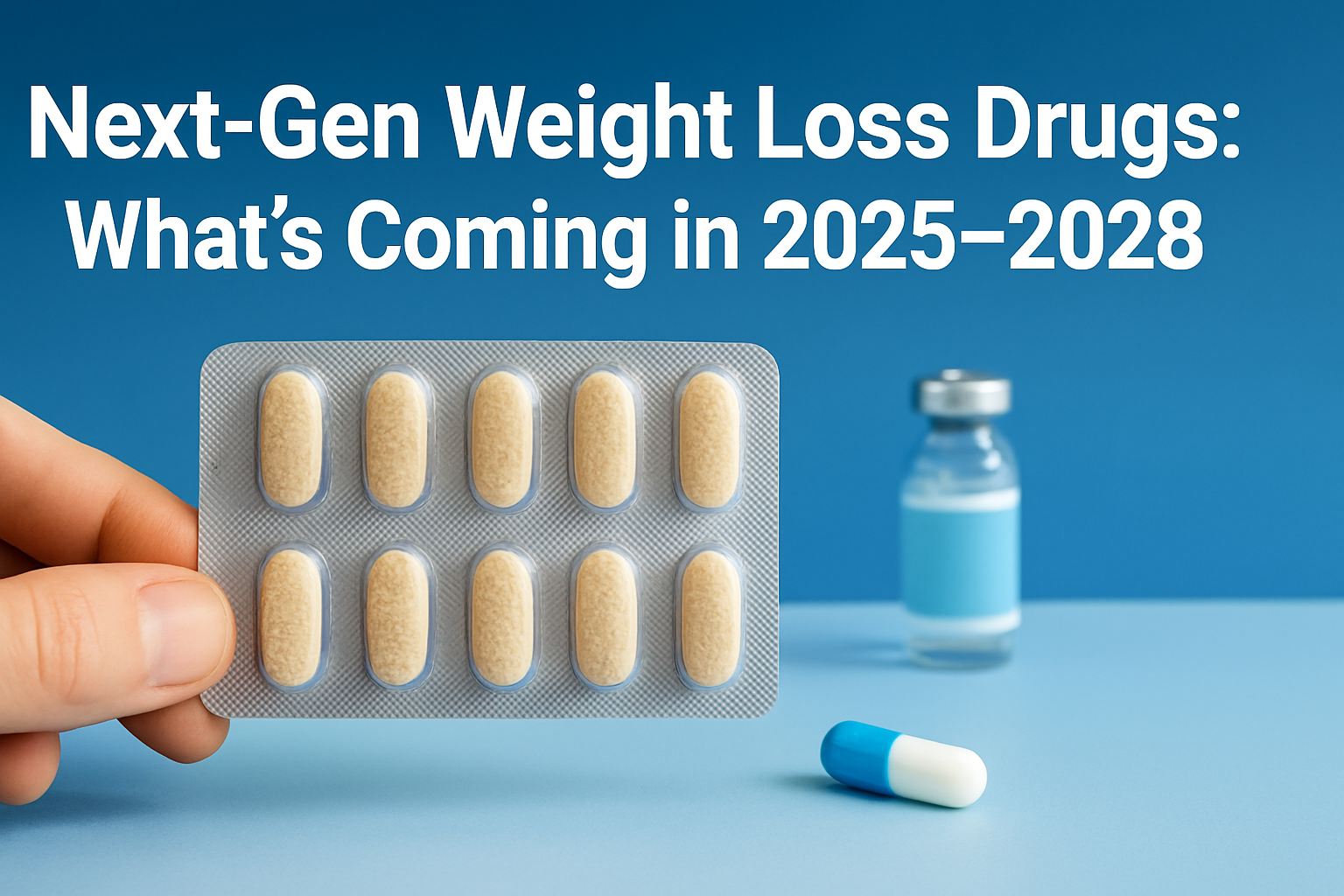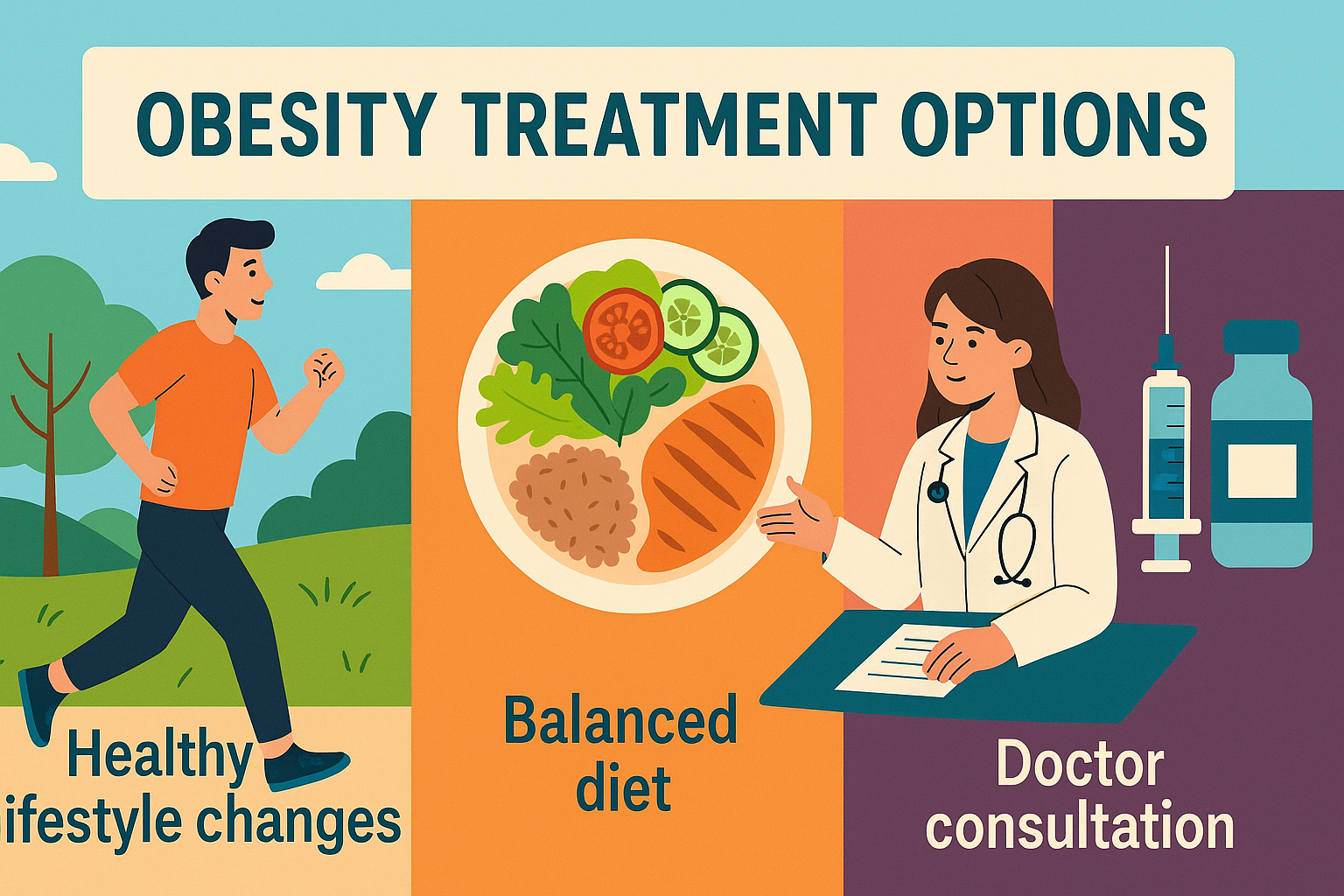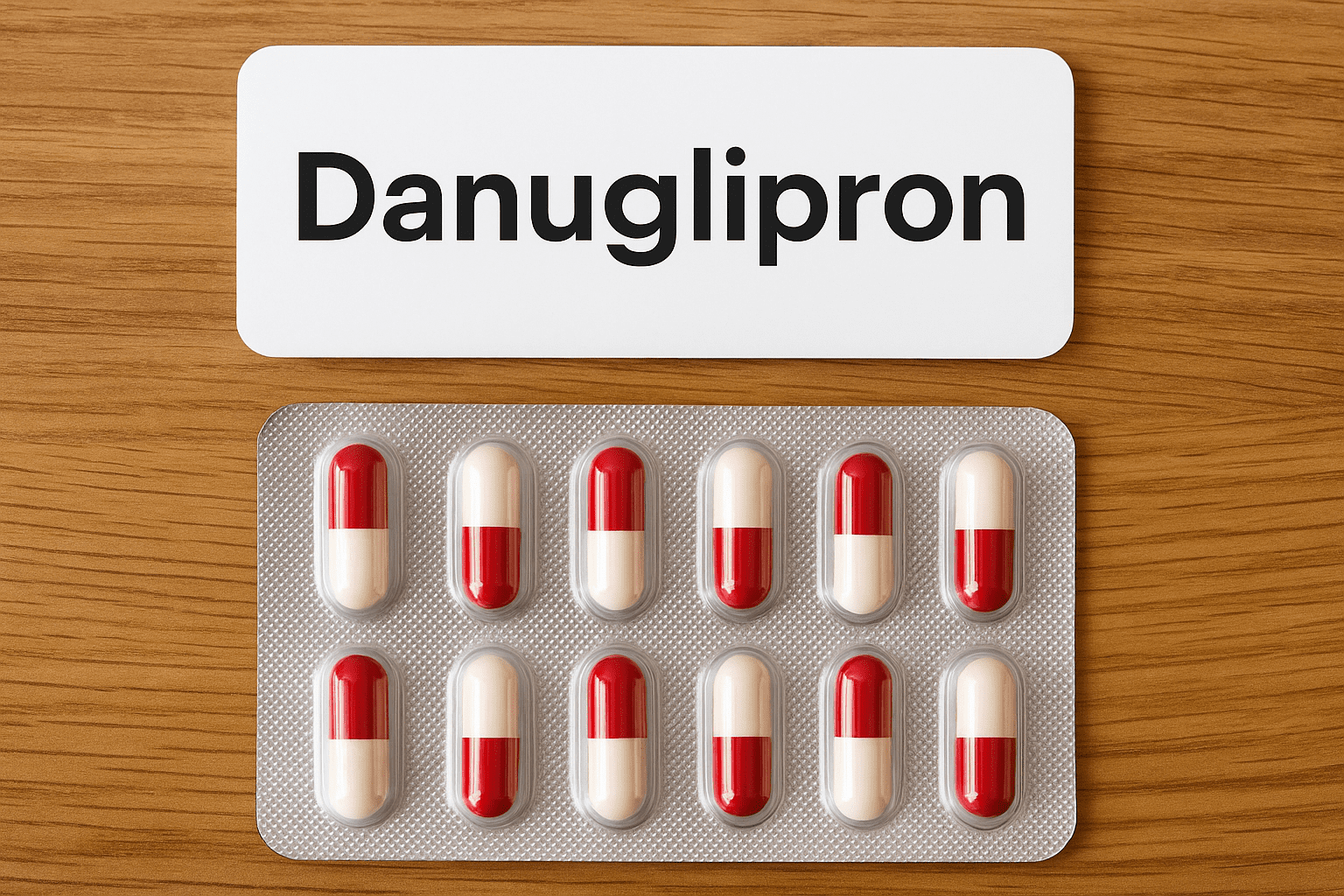From oral GLP-1 pills to triple-action injectables, here’s what’s next in obesity treatment
The obesity treatment landscape is evolving rapidly, with pharmaceutical companies developing innovative therapies that promise greater efficacy and convenience. From oral medications to multi-targeted injectables, here’s a look at the most anticipated weight loss drugs expected to emerge between 2025 and 2028.

2025–2026: Oral Therapies and Combination Treatments
1. Orforglipron (Eli Lilly)
- Type: Daily oral GLP-1 receptor agonist
- Status: Phase 3 trials show up to 14.7% weight loss over 36 weeks
- Why It Matters: As the first nonpeptide oral GLP-1 agonist, Orforglipron offers an alternative to injectables, potentially increasing patient adherence and accessibility.
2. Oral Semaglutide (Novo Nordisk)
- Type: Daily oral GLP-1 receptor agonist
- Status: FDA submission completed; awaiting approval
- Why It Matters: Building on the success of injectable Wegovy, the oral form could appeal to patients preferring pills over injections.
3. CagriSema (Novo Nordisk)
- Type: Once-weekly injectable combining semaglutide and cagrilintide
- Status: Phase 3 trials show up to 15.7% weight loss over 68 weeks
- Why It Matters: By targeting both appetite and satiety pathways, CagriSema aims to enhance weight loss efficacy beyond current treatments.
2027: Multi-Targeted Injectables
1. Retatrutide (Eli Lilly)
- Type: Weekly injectable targeting GLP-1, GIP, and glucagon receptors
- Status: Phase 2 trials report up to 24% weight loss
- Why It Matters: As a “triple agonist,” Retatrutide could set a new standard in weight loss efficacy, addressing multiple metabolic pathways simultaneously.
2. Survodutide (Boehringer Ingelheim)
- Type: Weekly injectable activating GLP-1 and glucagon receptors
- Status: Phase 2 trials ongoing
- Why It Matters: By combining appetite suppression with increased energy expenditure, Survodutide offers a dual approach to weight management.
2028 and Beyond: Novel Mechanisms
1. MariTide (Amgen)
- Type: Monthly injectable GLP-1 agonist and GIP antagonist
- Status: Phase 2 trials show significant weight loss over 52 weeks
- Why It Matters: MariTide’s unique mechanism may offer durable weight loss with less frequent dosing, improving patient compliance.
2. Bimagrumab (Eli Lilly)
- Type: Injectable myostatin inhibitor
- Status: Early-stage trials
- Why It Matters: By promoting muscle growth while reducing fat, Bimagrumab could improve overall metabolic health and physical function.
3. Monlunabant (Novo Nordisk)
- Type: Daily oral CB1 receptor antagonist
- Status: Preclinical development
- Why It Matters: Targeting peripheral CB1 receptors may reduce appetite without the psychiatric side effects seen in earlier drugs of this class.
Key Trends to Watch
- Oral Alternatives: The development of effective oral medications like Orforglipron and oral semaglutide could increase accessibility and patient preference.
- Multi-Targeted Therapies: Combining multiple hormonal pathways, as seen with Retatrutide and CagriSema, may enhance weight loss outcomes.
- Innovative Mechanisms: Drugs like MariTide and Bimagrumab explore new biological targets, potentially offering solutions for patients unresponsive to current treatments.
Final Thoughts
The next few years promise significant advancements in obesity treatment, with a focus on efficacy, convenience, and patient-centered approaches. As these therapies progress through clinical trials and regulatory reviews, they hold the potential to transform weight management strategies worldwide.
—Follow for updates as these therapies progress through clinical trials and FDA revieW
Reference: Nature , Reuters
Disclaimer: This article is for informational purposes only and does not constitute medical advice. Always consult a healthcare professional before starting any new treatment.




One thought on “Upcoming Weight Loss Drugs to Watch in 2026 and Beyond”